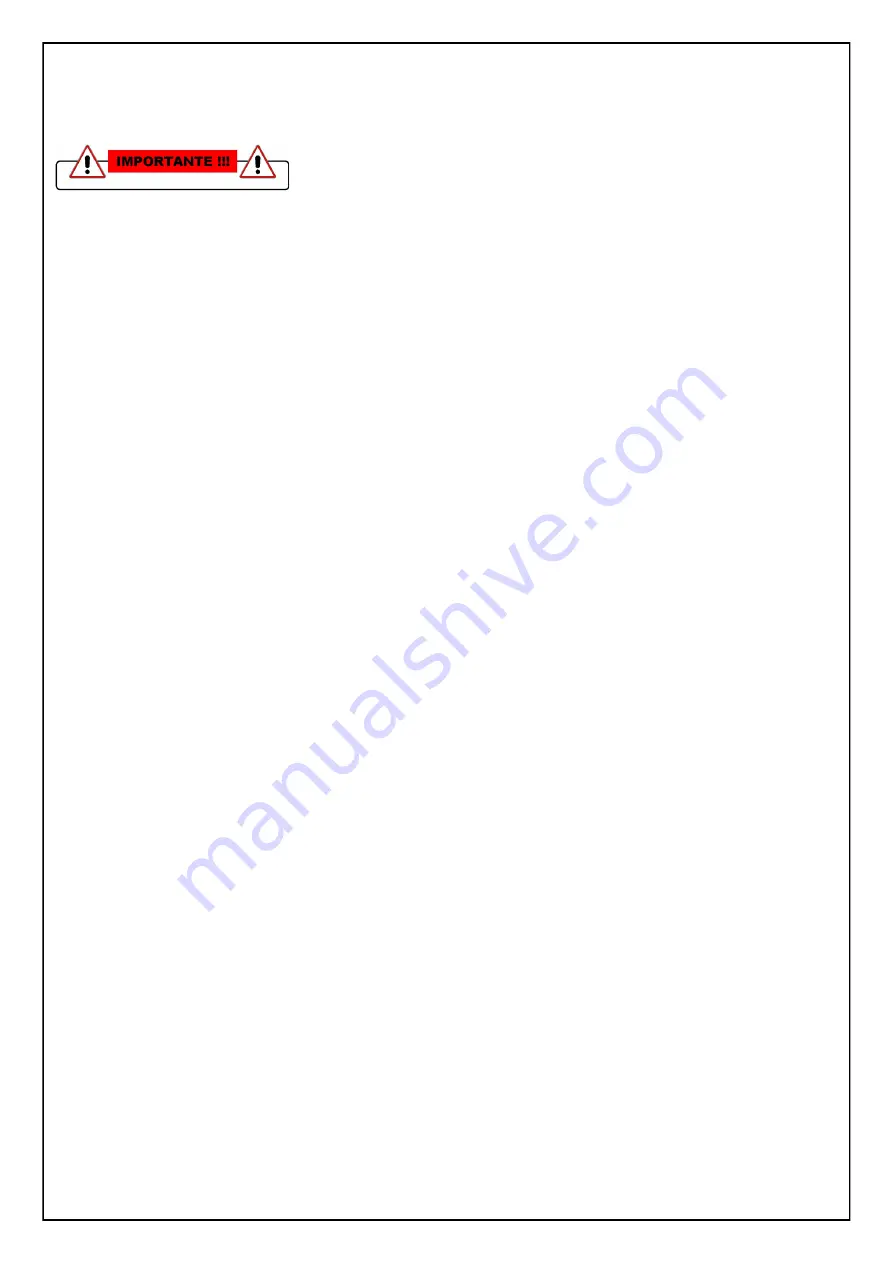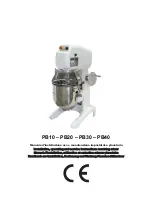
pg. 10
7. WORKING AND SAFETY GUIDELINES
1) During working and inspections of the machine, wear appropriate clothing (overalls,
gloves, helmet, safety shoes, fastened clothes, etc..).
2) The machine should be used in appropriately lit areas.
3) Given that gases emitted by sewage are poisonous, check that:
-the work area is adequately ventilated;
-there are no naked flames in the vicinity.
4) Never inspect the liquid sewage alone. In the case of loss of balance or fainting due
to fumes, immediate assistance will be required.
5) When you do not need to perform operations in the tank, it should remain covered.
6) The machine should only be used by responsible adults and in a location inaccessible
to children.
7) Do not perform repairs or adjustments when the machine is in operation or when it is
connected to the power supply.
8) The machine should only be used when all protective equipment is in place, follow-
ing the instructions identified in the above paragraphs in order to avoid contact with
moving parts. Do not damage or remove the protective equipment.
9) Never operate the machine without having filled the oil (transmission pipes and gear
units).
10) Prior to starting the work phases, ensure that the entire working unit (machine and
tractor) is stable.
11) During maintenance, ensure that the machine is completely at a standstill and discon-
nected from the power supply.
12) Do not use the truck for road transportation (if required).
13) During use, adjustment or maintenance operations, ensure that the rubber parts of the
machine (gaskets, etc.) do not come into contact with oil, grease or oil derivatives.
14) Ensure that the motor is rotating in a clockwise direction as indicated by the arrow
positioned on the motor (where appropriate).
15) For all electrically operated machines, the connection should be carried out in a loca-
tion protected from rainfall.
16) Use and store the machine in a dry place, protected from rainfall, when not being
used for prolonged periods
.




































